Artist Interview: Keyboard Great Suzanne Ciani on the UAD-1
Interview by Marsha Vdovin
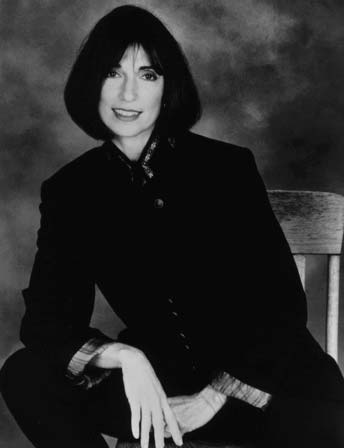 |
|
Composer Suzanne Ciani
|
This month's interview is with an extraordinary talent, five-time Grammy nominee Suzanne Ciani. Ciani was one of the first composers to work extensively with analog synthesizers in the '70s, when she was a young piano prodigy. After studying Music Composition at Wellesley College and UC Berkeley Graduate School of Music, she pioneered the use of Buchla Modular synths in sound design and commercial music, then established a new career as a new age composer. Ciani's first album in six years, Silver Ship, combines her early electronic music roots with her recent acoustic piano forays. Ciani composed and produced Silver Ship in Digital Performer in 24 bit/192 kHz with the Universal Audio Powered Plug Ins.
I had the pleasure of catching up with the charming and sophisticated Suzanne Ciani in her oceanside home, located an hour or so north of San Francisco.
What was it about computer music, or synthesis, that attracted you?
Many things. As a composer, I had an awareness that many composers died without ever hearing their music. You wrote for orchestra but the process of realizing the composition was difficult. So with electronic music, as a composer, you got to play and hear it in the sonic environment as you did it. That was very gratifying that you could control everything because as a composer I wanted to control everything. With electronics you could really specify and control everything. You didn't have to worry about some horrible performance of your work. You got to control it. I think that it was liberating. Because studying composition at that time was very much in the academic tradition, which I didn't like.
Why didn't you like studying composition in the academic tradition?
Well, it was non-emotional. It was really kind of mathematical: 12-tone, serial music, nothing that had to do with emotion. So I wanted to get out of that tradition, and electronics kind of gave me the chance to be on my own, in a new place.
What did you do when you worked for Don Buchla?
I assembled boards. I read schematics and plugged stuff in. And every once in a while, I also got to have some input on design. I used to say, " I don't understand what's going on the inside." He would say, "Well, you know, there's the inside, and the outside. You design the outside, what knobs you want, what it is you want to touch, what you want to control, and leave it to other people to figure out how to do it." That was very liberating, too. Because of the distinction between the use of something, separated from the realization of it.
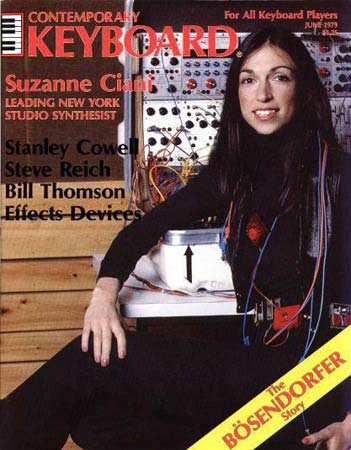 |
|
Suzanne Ciani on the cover of Contemporary Keyboard magazine in June 1979.
|
Do you still have any of the old instruments, or do you have any of the newer controllers?
I have my old Buchla 200. And it was a large-I had a large-ish system, and half of it was stolen, sadly, and shipped off to England and sold piecemeal throughout Europe, so I can't really get it back. But I still have half of the system, and recently I had it refurbished. I had it cleaned and parts replaced, so that it's functional again. Don had just finished the 200E, which is the updated version of the system that I had. It has MIDI compatibility, and memory, so it's a combination of the design that was created for the analog world and the advantages of digital, storage, and MIDI. But I don't have one of the new systems yet; I'm thinking about it. The thing that keeps me from getting it is that when I did play this instrument, it took over my life. And I just don't know if I'm willing-you know, that's what it takes. I mean, I played it for ten years. I never touched a piano in those ten years. I just devoted myself exclusively to this instrument, morning, noon and night. So when I look at it I think [gasps] it's overwhelming. But I think that's what it takes, really. I mean, it's an instrument.
So then you made a transition from this academic world to the New York commercial world, where you were very successful for a very long time. How did you make that move, that transition in your career?
I went to New York because I was invited to give a live Buchla performance in an art gallery. I went there a few months ahead of time to rehearse my performance, and as luck would have it, I was given a studio by one of the top commercial production music houses. I fell in love with New York from the minute I set foot in it. And I still love it and miss it. The energy was just so me.
And this was in the '80s?
No, this was in '74. In '74 I moved to New York. And I never planned to move there, it's just I never went home. I never went back to L.A.-at that time I was in L.A. So I stayed in New York and eventually got hungry. And because technology was such an expensive and demanding art, I knew I had to make money, so I started knocking on doors in the advertising world. Also, advertising was open to me, whereas the record companies-you know, my first goal was to be a recording artist.
“With the UAD-1 card the processing takes place on the card and doesn’t tax the CPU. That saved us.”
Why was advertising open more than the record companies?
The record companies really look at the past. They see what was, and they want to do it again. Advertising companies look to the future. They want something new, different, exciting. They don't care if they even understand it. So when I came in with this bizarre instrument, they were totally intrigued. And the record companies, all they said was, "You don't sing? You don't play guitar?" I was offered an early deal in Berkeley, at Fantasy Records, but I didn't take it because, again, they just wanted me to do the end of the world in sound.
Was that just a real golden era of your life, was that a wonderful time, those years in New York?
Oh yeah. It was just-the energy. All I can say is that the energy was just the best. But I worked all the time.
You did the film score for the Lily Tomlin film?
Yes. The Incredible Shrinking Woman.
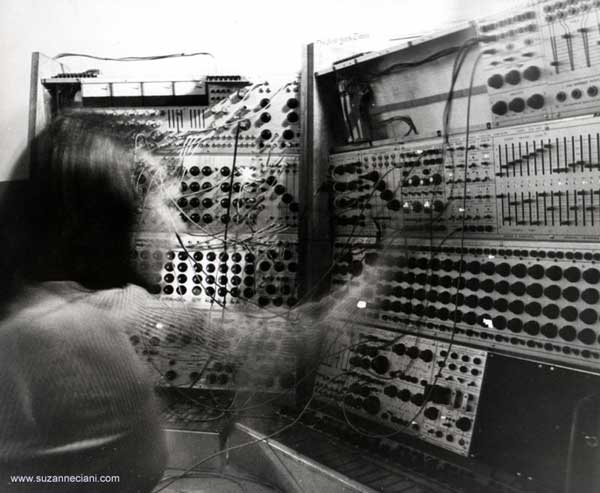 |
|
Suzanne Ciani in concert with a Buchla Synth in the late '70s.
|
Did you enjoy that?
Well, it was an interesting moment. I was thrilled to be doing this major feature. And at the time, I was supposedly the youngest woman ever to do a major Hollywood feature. But there was a strike going on. That was the good news and the bad news. The good part of that news was that we had to record in Italy, which was fabulous. And I took the supersonic-what is that called?
Oh, the Concorde?
I took the Concorde over. And they packed up my entire studio and shipped it to Rome. It was just so wonderful, right? And I had my Synclavier brought too-anything I wanted, they did. I love that about films. There are no obstacles. What do you need? That's what you're going to have. But I guess because it was my first experience and I didn't have the support system that you usually have in Hollywood, I had to do everything. I was sorting the scores, sorting out the parts before the session, and it was a 102-piece orchestra. The music weighed a ton. They kept telling me afterwards, "Oh, it's not always like this. You would have a staff if you were in Hollywood." But it exhausted me, because it was a huge-over an hour of music had to be done in six weeks.
I read once that you designed the famous AT&T sound that's still used today.
Right.
That's a kind of an amazing cultural impact that you've made.
Well, we were the top at that time in sound design, right? The first big, big sound that I did was the Coca-Cola pop and pour. That was my first experience in kind of hitting the jackpot. They used that on every commercial all over the world for years. And it was a kind of a new thing to do, that approach-it was like creating a logo.
Right. It's a sonic logo.
Yeah. And I haven't done much of that since, but I did do Verizon a couple of years ago.
Did you enjoy that work?
I did. I adored it. I loved having technology as my partner, because it was always new and exciting. It's never boring; it's always changing. And in the early days, because it was a small community, when you had a need, you communicated it and somebody designed it. I worked with Harold Bode, who did the vocoder. Harold lived in New Jersey. And I would say, "Harold, I wish I had this." And he would come over and bring it to me. That sense of creative input was always exciting, because it meant you weren't in a closed box.
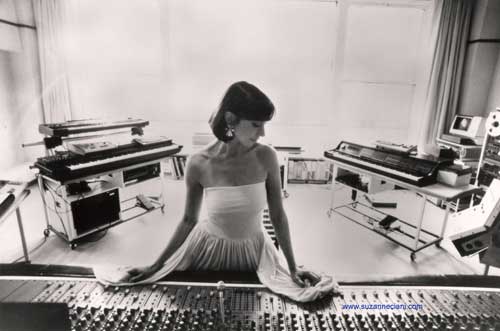 |
That must have been incredible. Let's go to the present, and talk about Silver Ship and what your current setup is. You have Digital Performer, and the UAD-1. And I assume you have a keyboard controller?
I have a couple of things. I have a Kurzweil 2500, and then I have a Yamaha MIDI, a Disklavier.
What type of monitors do you have?
I use Genelecs.
And do you have a mixer, or do you mix in the computer?
I do mix in the computer.
And this is your first album in several years?
It's my first album in six years.
What inspired this album?
I was in Italy-I've been going to Italy a lot, because I have family there-and I think I found my emotional connection there. And I'm in love with my family there. They're just absolutely fantastic. And I was at my cousin Isa's house, and I had brought my PianoBar. You know-Don Buchla designed this fabulous portable interface, called the PianoBar, that was then marketed by Moog Music. Never thought I'd see the day when Buchla and Moog would work together. So I had this thing. You travel and the thing looks like a rifle case. It is a rifle case, actually. But no problem getting it over there. And I had my little Mac laptop. And in ten minutes, I hooked this stuff up and was ready to go. So I stayed home while everybody else went on a boating trip. And I stayed in this beautiful villa with my PianoBar and computer and a great coffee machine, which really made a difference. So I started the project there, built up the momentum, came home and kept going. I started it in August, and I recorded it in, I think, January.
Could we talk about how you used the UAD-1 on any specific tracks? I guess the question is, how did you decide to purchase the UAD-1?
Well, I had committed to recording at the highest possible rate, so I was at 192/24. And I had been using Waves, but they weren't compatible. All of a sudden, they weren't ready yet, with 192. But Universal was. And my engineer, Peter Kelsey, in L.A., had told me about the DreamVerb, and I just got so excited because it was just what I was looking for.
So is that your favorite of the processors?
Yes, I used it on just about everything. I would say there wasn't an instrument that didn't get the DreamVerb. We also certainly used the compressors, and the Pultecs. We used the Plate Reverb on a piece called "Snow Crystals." There is an electronic sequence that is kind of like the representation of snow flurries, snow crystals, and so I did a lot of processing. On the snow crystals, we used a lot of tremolo, and kind of tasteful use of modulations, processing modulations, to give a spatial effect, and to create this poetry of sound. So if you hear "Snow Crystals," you can hear all of that.
Because of the horsepower issues with 192/24, we ran into a lot of processing dilemmas. This is not a Pro Tools system, and the processing occurs right in the CPU. But with the UAD-1 card the processing takes place on the card and doesn't tax the CPU. That saved us.
We used the DreamVerb and the Tremolo Part of the Nigel plug-in.
What kind of effect did you feel that the DreamVerb gave you, or what kind of feel?
I like, one, that you could control it to such an extent. And for me, it was warm and it was smooth. It was bright and alive-it had a lot of life in it. We played a lot-it's very intuitive and subjective, you know. You sit there and you just fool around, and you come up with what works in the context and what you like. We would store it and maybe come back to it in a different mix, or maybe not. There was no need to repeat.
Someone at UA asked me to ask you to compare your setup and virtual effects system now to the old days. Which do you prefer? How do you compare it to your Synclavier system?
Well, I'm finally able to work in my home studio without that being any kind of compromise. In the old days, I had this huge studio in New York filled with processing gear and patch bays and everything. So for me, the compactness of the whole system is ideal. I don't even have a patch bay in my studio. I don't want to have a patch bay. I just don't want to deal with that. So I don't have to have one-except through my MOTU interface, I can patch through that. Now there are a lot of things that have been replicated digitally. Sometimes it's just synths, like the Prophet 5. I used a digital Prophet 5.
Was it easier in the old days? It doesn't sound like it.
Well in the old days, I had a crew. I had an assistant, always, in the studio. I had an engineer.
But now you're able to work in privacy.
I can work in privacy, and that, to me, has a huge impact on the music. The fact that I can record the piano in the kind of emotional space that I choose. I'm very disciplined. It's not like I need the structure of a session in an expensive studio to get me to work. I worked in New York for so many years that I know how to schedule myself. But I do like the fact that I can have the emotional comfort of working alone. You know, I brought my engineer from New York for the mixing.
Where did you record the acoustic instruments, in your studio?
Yep.
And you brought your engineer in and did it there?
I brought my engineer from L.A., Peter Kelsey, up for a couple of days and worked on the mics. Basically, he got the best positioning and the miking all set, and then he left. And all I had to do was plug in the bass player, plug in the mic for the cellist or whatever, and that was all set. He had his EQs set up, and other things, and he did the piano. So then after all the recording was done, my engineer came from New York-Leslie Mathus, who mixed most of my early records. She's unbelievable. I've never worked with anyone so well.
I've heard people say they think that women make better engineers because they're more intuitive and less competitive.
Yes, less ego. I just adored working with Leslie again. I hadn't worked with her in a long time. This whole album, in fact, kind of represented an amalgam of my whole past. I mean, I worked with all my new California people, Paul McCandless, Michael Manring, Matt Eakle, Teja Bell, all the players from here, and then I worked with the guys that went way back to the first album: Mitch Farber, who worked with me on my first album, Seven Waves, as an arranger; and then Leslie, who mixed the first piece on my first album. And Val, the vocalist, was from my jingle days. Valerie Wilson was one of the top jingle singers when I was in New York. She did the vocal on the one vocal piece.
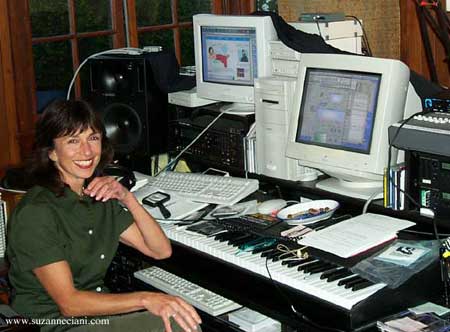 |
|
Suzanne Ciani in her California studio.
|
Another wonderful relationship I had on this record with was with Rob Arbittier. Well, Rob and I go way back, because I once gave a seminar for Roland, and he was in the audience, and that's when he decided to do what he's doing. So he always credits me with having inspired him to get into this thing at all. He's just the smartest, sweetest guy. Anyway, I wanted to use digital orchestra, strings, and I wanted to use this as an occasion to really exhaustively look at what was available. So Rob set up nine string libraries on his 24 linked computers. And I sent him the files, and he mocked up the strings in these nine orchestras, and then he would send me kind of a demo version at a low resolution. We never even worked in the same place. It was all done remotely. Then I could pick. I would say, "Well, the held notes sound really good on this library. The low notes sound good on this one. The midrange is nice here, the softness, that's nice here." And I could choose, almost note by note, which sound from which library. And I was really proud of that; I really thought we optimized the possibility in the strings. And without Rob and his arsenal of computers, I wouldn't have been able to do that. And then he did a few other things. We had some fixes in the vocal, where I sent him down a word, and he would send it back-maybe a little vocal pop, or something like that. And he was very supportive in whatever little detail needed to be handled.
Yeah, he's really talented.
Genius. I worked with him on the album Hotel Luna-I was recording in L.A., and he came, and they guy just blew my socks off. I was doing one piece, and he said, "Oh, you need some horns on that?" And I said, "Well, sure." And he improvised this total horn section. Sounds like Stevie Wonder. And I thought, Oh, now I know why Stevie Wonder sounds like Stevie Wonder.
That's right, because he works for Stevie Wonder. I forgot about that.
Yeah.
Do you miss being involved in the design of equipment and gear? Do you miss being directly involved with the people designing stuff?
I have a certain distance, now, it's true, but not completely. I still give feedback where I feel it's appropriate. I think the conversation is still open.
What is on the horizon for you?
Right now, after having recorded and put the album out, I'm in business mode. I just got back from the Midem Conference in France.
And what did you do there?
I'm making deals, all over the world.
Distribution deals?
Distribution, and also getting performances-my goal is to be performing in China. I've already taken my group to Taiwan and Spain. But my goal, really, is to perform more, and get that happening. Of course, I really need a lot of support in that, so that's what I'm looking for.
How many people will you tour with?
Well, I usually tour with Paul McCandless, Matt Eakle, Michael Manring, Teja Bell. Those are the four basic guys. And then I add cello, violin and percussion. I'm really looking forward to it.
Check Suzanne Ciani's website for tour dates and to purchase Silver Ship.
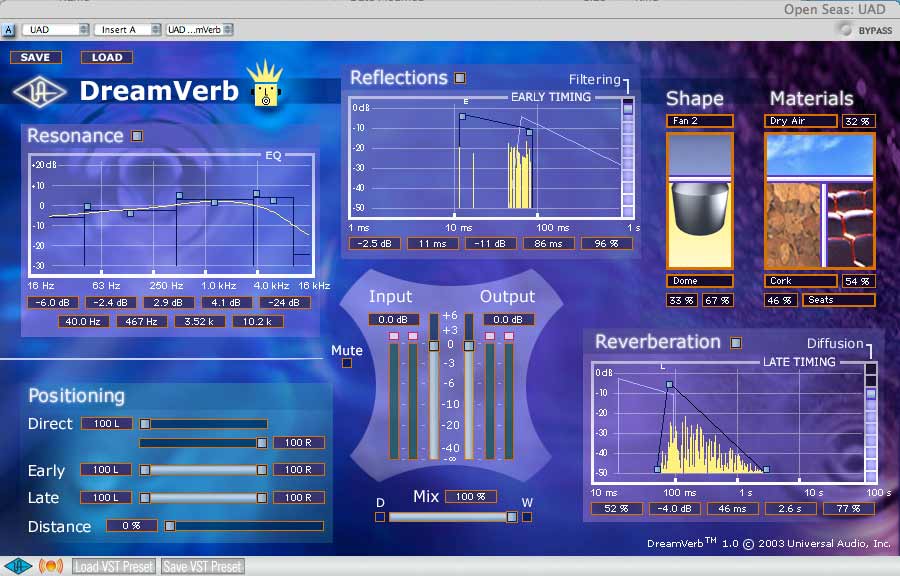 |
|
Screen shot of the DreamVerb used in the song "Open Seas" from Silver Ship
|
Questions or comments on this article?





